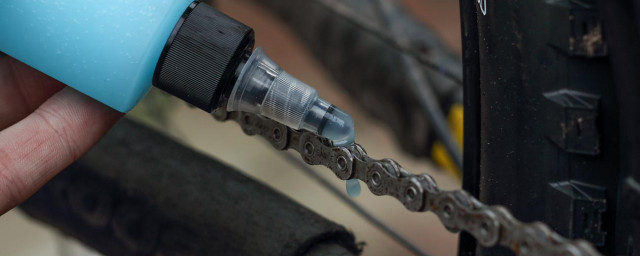When should you replace your bicycle chain?

The humble bike chain has a pretty rough life. However, if you want smooth shifting, then it needs to be performing at its best or it'll start ruining other more expensive bits such as your cassette or chainring. That's why replacing your chain before it's worn is a smart thing to do - but how can you tell?
- Five ways to tell your shock needs a service
- When should you replace your bicycle helmet?
- The best (and worst) mountain bike upgrades under £100
[Updated 12th September 2019]
There's a lot of superstition about just when and why you should change your chain in order to maximise the life of your drivetrain, with some people saying you should do it frequently and others saying you don't need to bother unless the whole lot is shot.
We spoke with both Shimano and SRAM for their expert input on when you should switch your chain and they came back with pretty similar advice.
Shimano's take on the matter was pretty simple. You should use their TL-CN42 chain checking tool to measure chain wear and switch it out promptly if it's worn, telling us: "A worn and extended chain will very quickly wear out the sprockets and chainrings so the sooner you replace your chain, the less frequently you'll need to think about replacing your cassette and chainrings."
Shimano's tool is a go/no-go device - if the end of it slots into the chain, then it's time for a replacement. If it doesn't, then it's fine. Their tool is rather cunning in that it has three tabs, meaning that it measures chain stretch on its own, rather than chain stretch plus wear in the rollers and bushings.
What accelerates wear on the teeth isn't stretch in the links, despite often being called as such. It's the wear in the bushing and pins that make up the chain that alters the effective pitch of the chain and then loads the teeth unevenly. The higher pressures involved from two or three teeth taking the bulk of the pedalling force causes accelerated wear - especially once dirt is involved. There's some more detail on that subject in this article on Pardo.net - it's well worth a read.
SRAM's technical manual has this to say: "Use a chain wear tool to measure chain wear and replace the chain when it reaches 0.8% elongation. The cassette and chainrings should be replaced when a new chain is installed."
SRAM recommends that you measure this with an outside pin to pin measurement - like that given by the Shimano tool - for maximum accuracy, with the caveat: "[some] tool measures roller to roller inside the chain, which is not so accurate on lower-priced chains without hard chrome finish or other high-end finishes. So on an NX chain (without hard chrome) the rollers might wear out (and it seems like an elongation) earlier than the elongation actually happens, which isn’t great to keep your chainrings and cassette lasting longer."
If you've got a set of callipers or a steel ruler, you can simply measure your chain and calculate the 'stretch'. All mountain bike chains have a 1/2" pitch, meaning they measure half an inch between each rivet. Switching into metric, that means 12 links measure 152.4mm (6") so if your chain measures at 153.6mm over the same number of links, it's time for a new one.
Of course, there are ways to prolong your chain's life so this doesn't become any more of an expensive hobby than it needs to be. When it comes to chains, cleanliness really is next to godliness, as Shimano point out: "You should periodically wash the chainrings/sprockets in a neutral detergent and then lubricate them again. In addition, cleaning the chain with neutral detergent and lubricating it can be an effective way of extending its use."
Letting your chain corrode will increase wear on rollers and pins, as well as increasing friction, making life harder all-around. Chain friction is the number one cause of drivetrain drag, with the extreme chain angles of modern single chainring systems exacerbating things greatly.
The people at SRAM also add: "No matter what system you are running from NX to XX1, you should never save your money on the chain. A high-quality chain provides a longer lifespan of the whole system."












